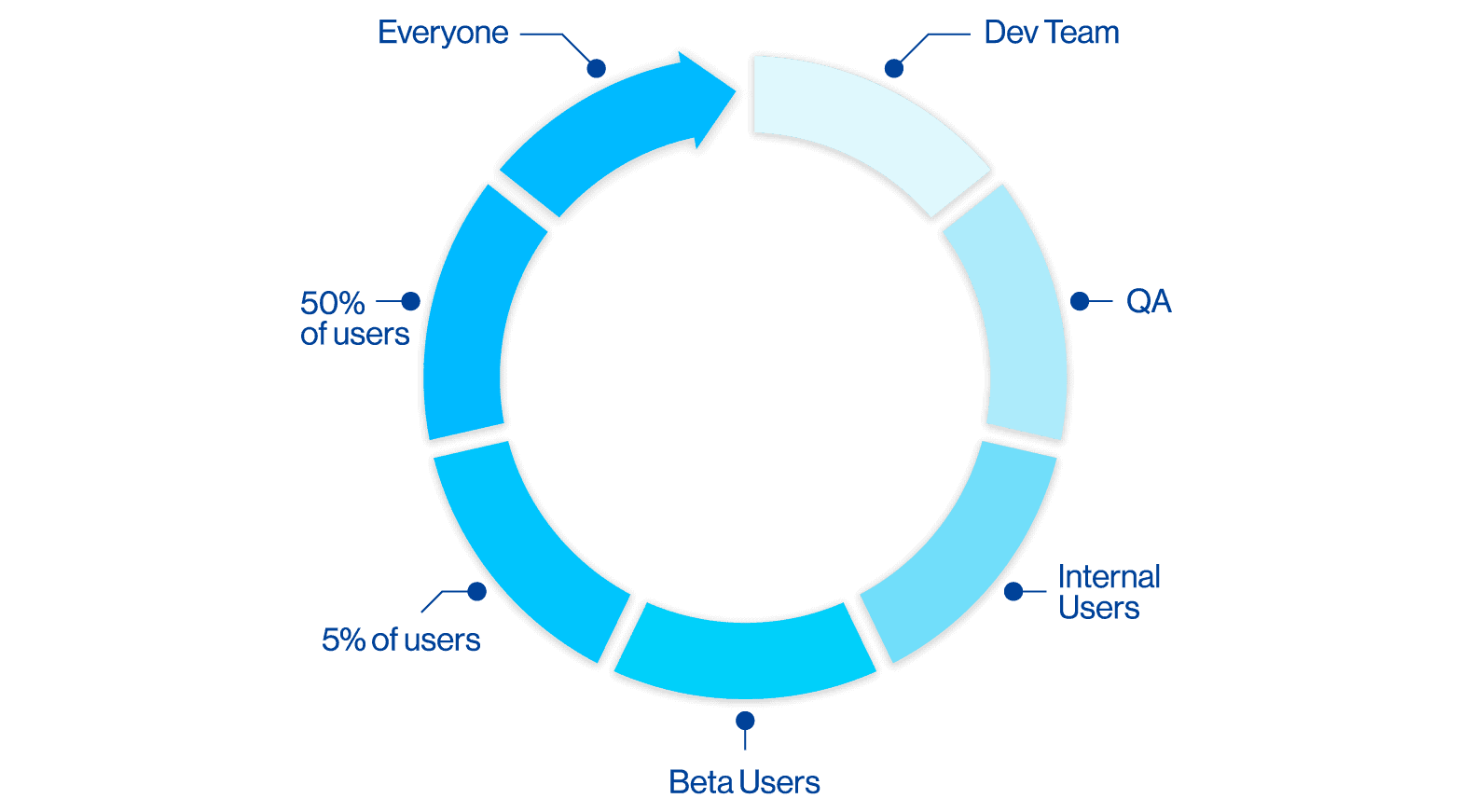Mastering Gradual Rollout Strategies with Feature Flag Tools: A Guide to Streamlined Deployments and Reduced Risk

Introduction
In today's fast-paced and competitive software industry, delivering new features quickly and reliably is a key differentiator for any product. However, releasing new features also comes with risks, such as introducing bugs, breaking existing functionality, or disappointing users. How can you minimize these risks while still delivering value to your customers?
One answer is to use gradual rollout with feature flag tools. Gradual rollout, also known as progressive delivery, allows you to gradually expose new features to a subset of users, collect feedback, and iterate before rolling out to everyone. Feature flag tools enable you to control the visibility and behavior of your features through toggles that can be turned on or off at any time.
Gradual rollout
Gradual rollout is a way of releasing new features to users in a controlled and incremental manner. Instead of deploying a new feature to all users at once, you can deploy it to a small group of users first, monitor its performance and impact, and then gradually increase the exposure until it reaches 100% of your user base.
Gradual rollout strategies have several benefits for software development teams and product managers:
- Reduce the risk of deploying faulty or unwanted features that could harm your product quality, user experience, or business metrics.
- Allow you to collect feedback from real users and validate your assumptions and hypotheses about your new features.
- Enable you to experiment with different variations of your features and measure their effectiveness using data-driven methods such as A/B testing or multivariate testing.
- Give you more flexibility and agility to respond to changing user needs, market conditions, or technical issues by allowing you to roll back or modify your features at any time.
Feature Flag Tools
Feature flag tools are software tools that allow you to manage the visibility and behavior of your features through flags or toggles that can be turned on or off at any time. Feature flag tools typically consist of two components:
- A feature flag SDK that integrates with your codebase and allows you to wrap your features in conditional statements that check the status of the corresponding flags.
- A feature flag management platform that provides a user interface for creating, updating, and deleting flags, as well as configuring their targeting rules, segmentation criteria, and rollout percentages.
Using feature flag tools, you can easily control which users see which features without having to redeploy your code or restart your servers. You can also use feature flag tools to monitor the performance and impact of your features using metrics, analytics, and alerts.
FeatBit
FeatBit is an open-source feature flag and experimentation service that can help you implement gradual rollout strategies. With FeatBit, you can easily manage feature flags across your entire application stack and gradually roll out new features to your users.
FeatBit provides a simple yet powerful interface for managing feature flags, allowing you to turn features on or off at runtime without deploying new code. This approach enables you to test new features in production environments without affecting users who aren't ready for them.
Conclusion
Implement gradual rollout using feature flag tools is an effective way to manage the release of new features in large-scale applications with diverse user bases. With FeatBit, you can easily manage feature flags across your entire application stack and gradually roll out new features to your users, ensuring a smooth and successful launch of new features.